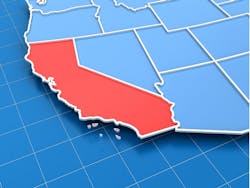California Opens ‘Diesel Alternative” Discussion in Microgrid Proceeding
California regulators are seeking comment from industry stakeholders on alternatives to diesel generators as part of an ongoing microgrid proceeding (19-09-009).
The California Public Utilities Commission seeks comment by September 18.
The state’s largest utility, Pacific Gas & Electric (PG&E), had originally planned to develop clean energy microgrids for the 2020 wildfire season, but abandoned the plan out of concern about the cost and complexity of building microgrids in a highly compressed time frame.
Instead, PG&E pursued a plan to lease 350 MW of temporary diesel generators for up to 63 substations.
Now the commission is considering how it might replace the diesel generators for 2021. But a recent workshop held on the topic concluded with no clear path forward. This indicates that that alternatives to diesel might not be ready for 2021, either, and a longer term plan might be necessary, the commission said.
In a September 4 posting, the commission offered a proposal for stakeholder comment that would allow utilities to again lease diesel generators for 2021 as long as they meet a series of requirements, among them compliance with local air quality rules for prime power.
Utilities also would submit detailed plans for microgrid pilot projects at up to three substations “to start the transition toward cleaner energy.”
The proposal calls for the microgrids to meet various standards, among them:
- Cost no more than $500/kW-year (a high estimate for diesel reservation and operation costs)
- Be capable of black start and islanding for 48 hours
- Begin operating by October 2021 or June 2022
- Meet various air emissions requirements
For beyond 2022, the proposal lays out an application process that would require utilities to show how they will minimize temporary generator use over 5-10 years and transition to clean generation.
With both blackouts and wildfire-related power shutoffs occuring in recent weeks, several stakeholders are urging the commission to move more quickly on microgrids. The commission is currently considering a microgrid tariff and other approaches to incentivize microgrid development.
Google told the commission that the state needs a “more ambitious vision for the commercialization of microgrids,” arguing that the technology is well beyond the utility pilot stage. Google pushed for more incentive for private development of microgrids.
“In Japan, for example, there has been widespread development of microgrids by nonutility enterprises under a ‘National Resilience Program” launched by the national government in the aftermath of the 2011 earthquake and tsunami. In Australia, a government commission has considered widespread development of ‘Stand-Alone Power Systems,’ including microgrids, and has endorsed changes to the regulatory framework to facilitate development of such systems by third-party, non-utility enterprises,” Google wrote in comments filed August 28.
“In contrast, the IOUs – Pacific Gas and Electric Company (“PG&E”), Southern California Edison Company (“SCE”) and San Diego Gas & Electric Company (“SDG&E”) – tend to characterize microgrids as if they involved an emerging, untested technology,” the tech giant said.
In its filing, Bloom Energy said that the California commission is “center stage with the authority and opportunity to provide the leadership necessary to navigate these immensely challenging times. The commission should meet this moment and provide a clear path forward to enable Californians a better way.”
Read more articles by Microgrid Knowledge about the California microgrid proceeding, Rulemaking 19-09-009.
About the Author
Elisa Wood
Editor-in-Chief
Elisa Wood is the editor and founder of EnergyChangemakers.com. She is co-founder and former editor of Microgrid Knowledge.
